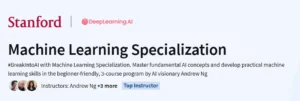What will you learn in Data Structures for Coding Interviews in C++ Course
Master core data structures including arrays, linked lists, stacks, queues, trees, heaps, graphs, and hash maps using C++
Solve 150+ real-world coding interview questions with detailed explanations and optimal solutions
Learn algorithmic techniques like recursion, divide and conquer, sliding window, backtracking, and dynamic programming
Understand time and space complexity analysis for each approach to optimize your code
Build confidence in tackling technical interviews at FAANG and top tech companies through mock assessments and quizzes
Program Overview
Module 1: C++ Refresher
⏳ 2 hours
Topics: Pointers, references, dynamic memory, classes, STL (vectors, sets, maps)
Hands-on: Write C++ functions using vectors and hash maps; use STL containers in practice snippets
Module 2: Arrays & Strings
⏳ 3 hours
Topics: Traversals, two-pointer techniques, sliding window, frequency maps
Hands-on: Solve problems like “Longest Substring Without Repeating Characters” and “Container With Most Water”
Module 3: Linked Lists
⏳ 2.5 hours
Topics: Singly & doubly linked lists, fast-slow pointers, reversal, merge, cycle detection
Hands-on: Implement list reversal, detect loops, and merge sorted linked lists
Module 4: Stacks & Queues
⏳ 2 hours
Topics: Monotonic stacks, min/max stacks, circular queues, queue using stacks
Hands-on: Solve problems like “Daily Temperatures” and “Implement Queue Using Stacks”
Module 5: Trees & Binary Search Trees
⏳ 3.5 hours
Topics: DFS, BFS, tree traversals, balanced BSTs, diameter, serialization
Hands-on: Build a BST from preorder, find lowest common ancestor, and serialize/deserialize a tree
Module 6: Heaps & Priority Queues
⏳ 2 hours
Topics: Min-heap, max-heap, top-k elements, heap sort
Hands-on: Solve “K Closest Points to Origin” and implement heapify manually
Module 7: Recursion & Backtracking
⏳ 2 hours
Topics: Subsets, permutations, N-Queens, Sudoku solver
Hands-on: Code backtracking solutions and trace recursion trees step by step
Module 8: Hash Maps & Hash Sets
⏳ 2 hours
Topics: Collision handling, key-value pairs, frequency counters
Hands-on: Solve “Group Anagrams” and “Two Sum” using hash-based approaches
Module 9: Graphs & Traversals
⏳ 3 hours
Topics: BFS, DFS, topological sort, cycle detection, connected components
Hands-on: Implement graph traversals and solve “Course Schedule” and “Number of Islands”
Module 10: Dynamic Programming
⏳ 4 hours
Topics: Memoization, tabulation, state transition, DP on strings, grids, subsequences
Hands-on: Solve classics like “Longest Palindromic Substring,” “Edit Distance,” and “Knapsack”
Module 11: Final Interview Prep
⏳ 2 hours
Topics: Mock interviews, timed assessments, complexity review
Hands-on: Take simulated coding interviews and compare solutions with optimal approaches
Get certificate
Job Outlook
Strong demand for C++ developers in system-level programming, game development, finance, and embedded systems
Mastery of data structures and algorithms significantly boosts chances of cracking FAANG and Tier-1 interviews
Entry to mid-level roles offer $80,000–$140,000 annually; senior and competitive roles exceed $160,000
Useful for roles like Software Engineer, Systems Engineer, Competitive Programmer, and Game Developer
Specification: Data Structures for Coding Interviews in C++
|





